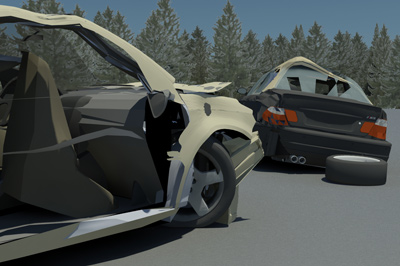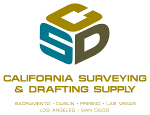 An auto accident can be one of the most demanding events an investigator can face. Not only does the task require detailed and accurate measurements, but the data must be collected as quickly in order to get traffic moving smoothly again. For these reasons, a growing number of forensic engineers have turned to three-dimensional laser scanning for accidents, taking advantage of the revolutionary tools the technology can bring to bear.
An auto accident can be one of the most demanding events an investigator can face. Not only does the task require detailed and accurate measurements, but the data must be collected as quickly in order to get traffic moving smoothly again. For these reasons, a growing number of forensic engineers have turned to three-dimensional laser scanning for accidents, taking advantage of the revolutionary tools the technology can bring to bear.
Rather than manually taking a few dozen measurements between specific landmarks, vehicles and debris, laser scanners like the Trimble GX can capture a three-dimensional, panoramic image that includes millions of discrete coordinates, rendered in photo-realistic detail at the sub-centimeter level of accuracy. Paired with Trimble’s patented SureScan technology, the scanner can collect data at the ideal point density defined by the user, ensuring that investigators have the data they need without being overwhelmed.
Combining the critical elements of accuracy and speed, laser scanning for accidents can use the point cloud data to create a permanent virtual replica of the accident scene. Because each point has a real X, Y and Z value, measurements can be taken of the distance between any two objects at any time. This allows the data to support new observations after the fact, long after the actual accident site has been disturbed.
The final advantage of laser scanning for accidents over traditional forensics is the comprehensiveness of the scan. Laser scanners record every object on the scene, relieving investigators of the need to immediately identify everything of interest. This can be especially helpful in accidents that produce a great deal of debris, or the vehicle enters an area with tall grass or woods.
In addition, the accuracy of the scanners can allow investigators a degree of detail that a photograph can miss, down to every scratch. The Focus 3D scanner from FARO can capture data at millimeter-level resolution, with a built-in level sensor and a long range of up to 120 meters. Combined with a capture rate of 976,000 measurement points per second, the scanner can provide investigators with a reference tool that, thanks to the precision of measurements in the point data, can be even better than the actual scene.
Accident investigations require a particularly sophisticated form of analysis, with sophisticated equipment to support it. Not only can any small detail provide critical evidence, but the legal process may require the data to be revisited multiple times, months or years after the crash. Laser imaging has proven ideally suited, leading even companies that focused only on architectural surveys to gain a leg up in the forensic field using laser scanning for accidents. And with new scanners offering ever more detail, accuracy and flexibility, the technology is likely to become even more valuable in the years to come.
Click on the button below to download a success story that details the impact use of the FARO 3D laser scanner has had on one of the country's leading vehicle stability and accident reconstruction firms.

